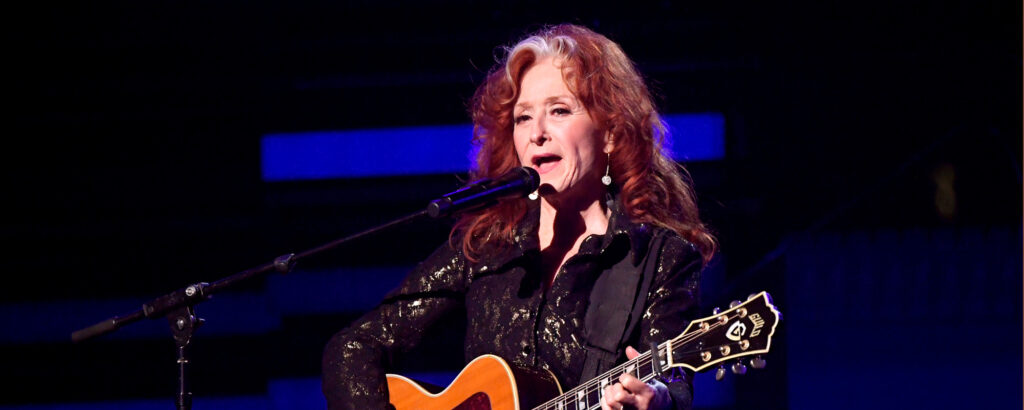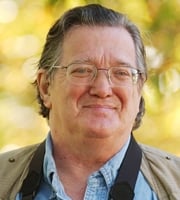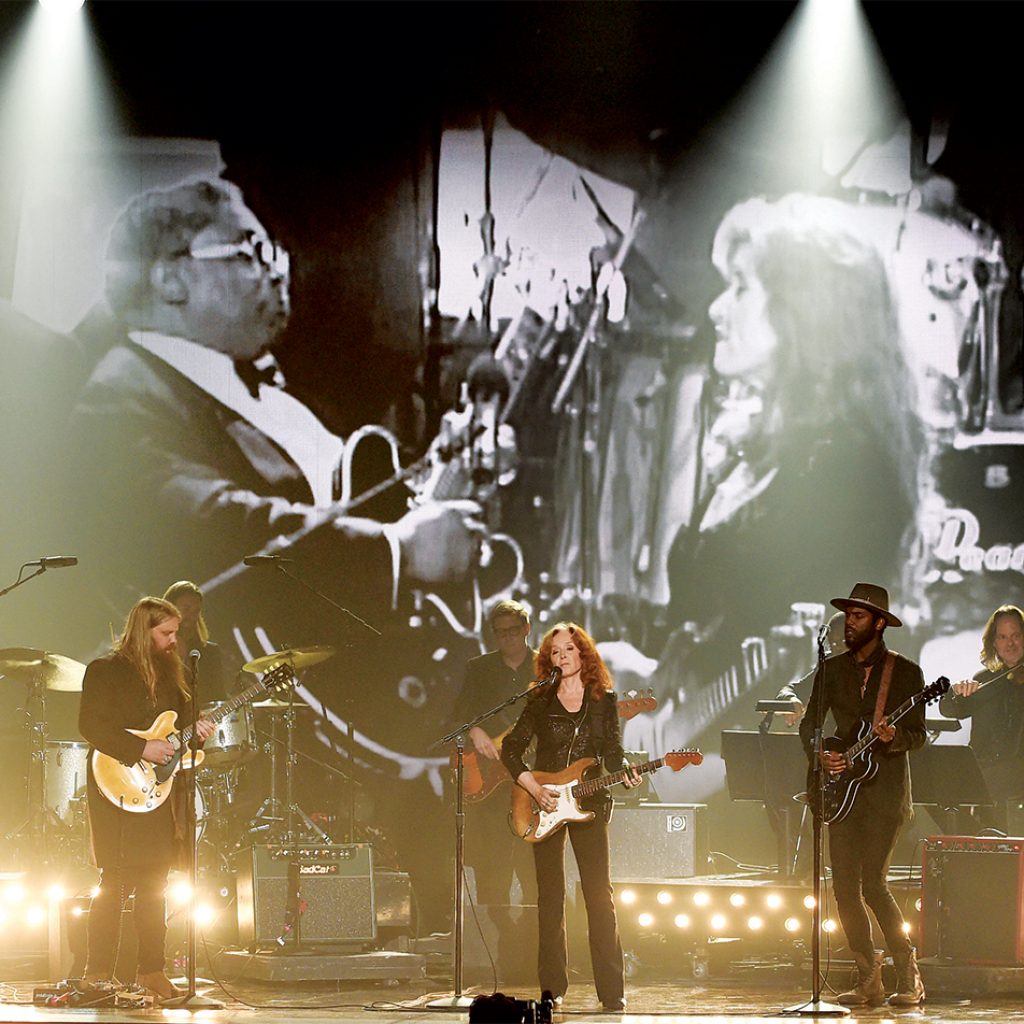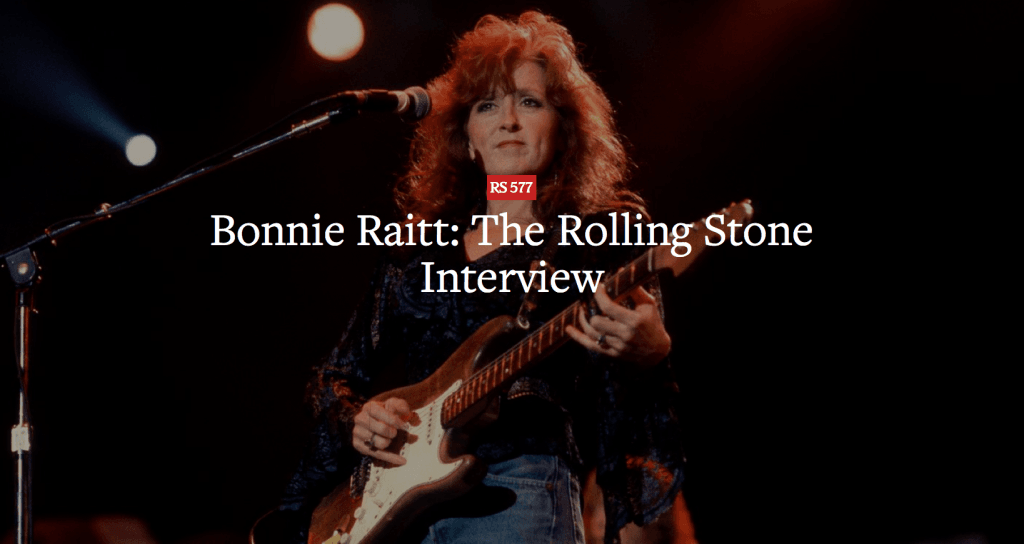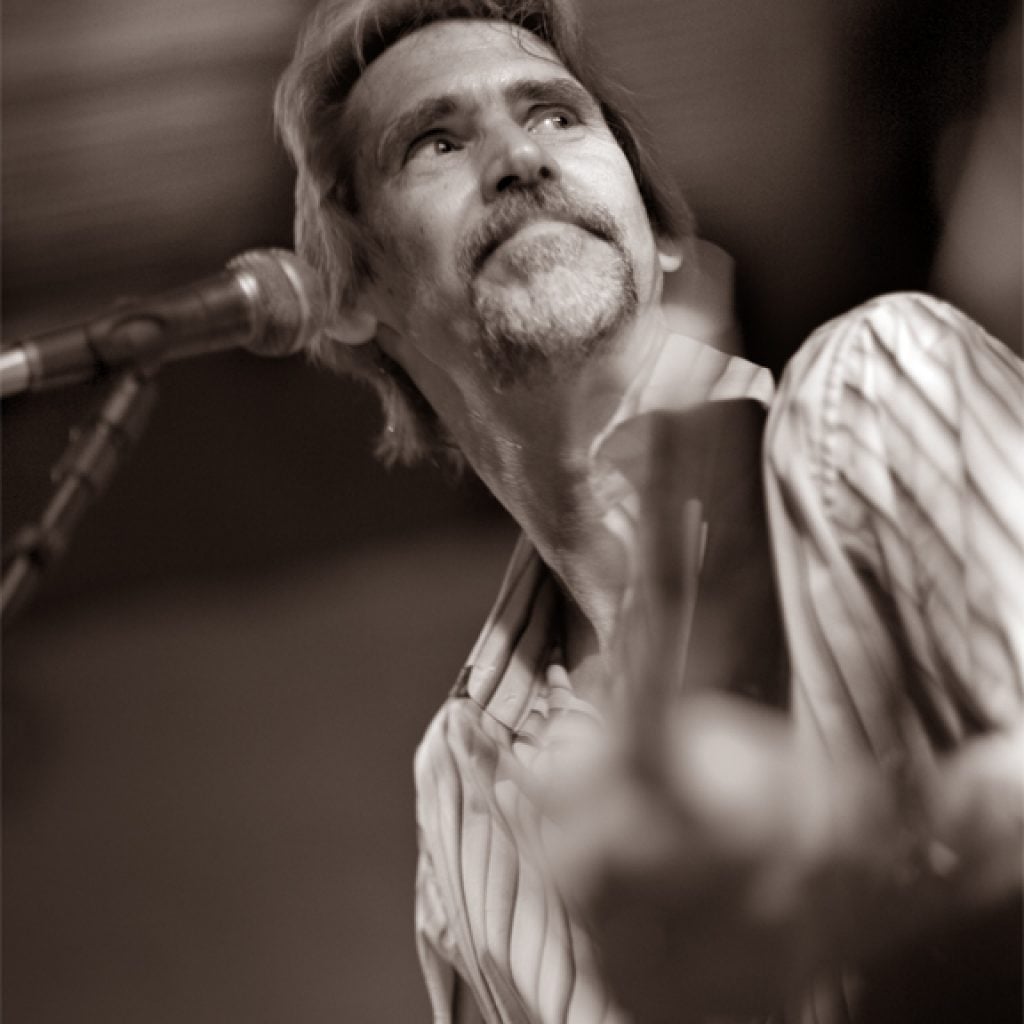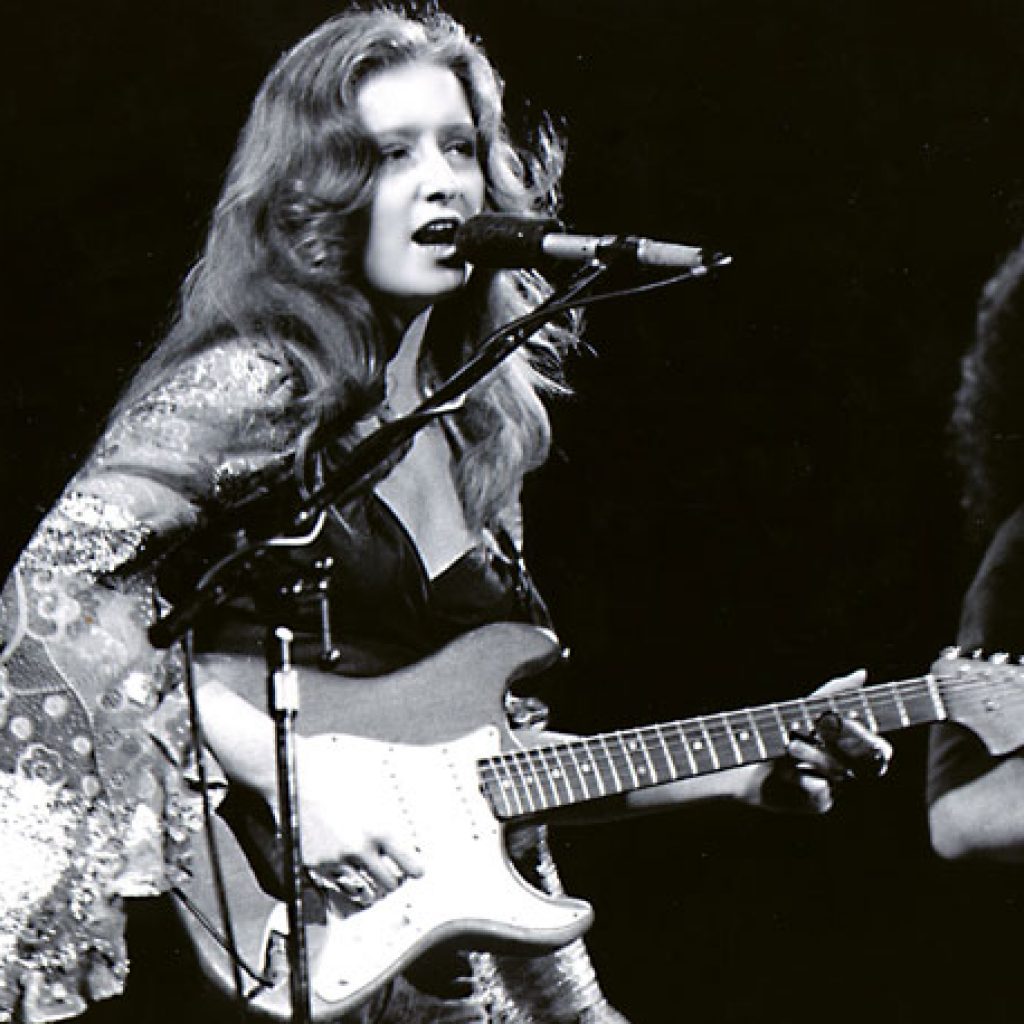
At 17 she was reading African studies, planning to work in the Third World. One day Dick Waterman ‘phoned: he invited her to his house to meet some people . . .Fred McDowell, Son
House and Otis Rush.
FREEBO’S SHAGGY, morose head appears through the doors of the van; “There is no truth in the
rumour,” he shouts, “that when Bonnie Raitt arrived in this country Harold Wilson was forced to quit.” And he retires, slamming the doors shut, with a triumphant grin.
8.45am and the VW is taking Bonnie from Blake’s Hotel in Kensington to London Airport. It’s 24 hours since she flew in from America and today is the first of a heavy two-week schedule of promotional work. This is stage one in the behind-the-scenes work that may break Bonnie Raitt, make her more accessible, help her sell records.
Five albums and six years on the road have her packing halls tight across America, but she can‘t sell enough albums there to break the top 50. In Britain she had had no more than an ardent fringe following until now. At the end of this two weeks there‘s her first concert appearance — the only cream on offer. For the rest it’s a relentless energy-consuming, fairly unstimulating and well-trodden path. Like a candidate for the primaries, Bonnie Raitt must smile and talk, talk and smile, until her voice is hoarse, and her face hurts.
IN I963 Bonnie Raitt underwent a conversion to the blues beneath the sun at the Newport Festival. She had been a rather insular Californian teenager, spending most of her comfortable LA years indoors listening to music on the radio. While her rich friends sported themselves at Malibu.
Raitt, whose fair skin was in constant battle with sunburn, stayed home and developed an intense fascination with folk and soul music.
The daughter of a Quaker family whose political stance was liberal pacifist and (in American terms) left, Raitt was instantly drawn to Dylan and Baez. By 11 she was playing acoustic guitar, encouraged by her father, musical/comedy star John Raitt. When school holidays came round she would move over to the East coast to be near her mother, and attend summer camp where there was more Dylan and Baez, and involvement with the peace movement. One year she went back home to the lush pastures of Beverly Hills and tuned into local soul radio stations and her rejection of the Californian lifestyle, surf music and the sunbaked brains around her was complete.
At Newport she saw great blues artists for the first time. Stunned and moved by people like Muddy Waters and Jimmy Reed she was finally faced with music rooted in first-hand experience of the struggle for survival. She picked up her guitar again: “It wasn‘t,” she recalls, “too far a jump. I went from the Miracles to Muddy Waters overnight. I got hold of all the old Vanguard records. so I could teach myself blues guitar. I was a blues freak completely. But I was a rotten blues guitarist because I was doing everything wrong.”
Music was a pastime. Raitt never considered becoming a professional and she had no ambition to be in the limelight. Her whole childhood had been spent surrounded by film stars and actors . . . she knew from close to what ‘fame’ did to people and she wasn‘t interested. What she was attracted to was a cultural and political movement.
By 17 she was attending Radcliffe College in Massachusetts, reading African studies. She planned to work in the newly emerging Third World. One day Dick Waterman, musician and old friend, phoned her up. Would she like to come over to his house? He had some people there he thought she‘d be eager to meet — Fred McDowell, Son House and Otis Rush.
” ‘CAUSE NO mater what you do, even pray to heaven abo-ove, all you get from her is — long distance lo-ooove” . . .
Unexpectedly the sun has chipped its way through the London clouds and along the M4 Little Feat play on tape. Bonnie, dark gIasses, wavy hair thrown back, sings to her own harmony work. She stamps her feet and chuckles at the end of the track: “Ooooh I love that band to death!”
She turns to Warner Bros. promotion man Rick Savage: “What am I doing today?”. Savage runs down the itinerary without looking — at noon lunch with the producer at Radio Clyde in Glasgow: at 2.00pm an interview with the station they’ll use in two sections for different programmes. Then a drive to Edinburgh so by 4.30 she can do a quick live appearance on Radio Forth to plug the album: then a long taped interview for later programming. Flying back from Edinburgh around 6.00pm. Raitt sighs a small “Oh”. She has only had four hours sleep.
Her personal manager, Mark Hammerman, looks at her with a little concern. Hammerman once managed Fanny, before that he was involved with Alice Cooper. A small genial man in his 40s he now handles Jackson Browne, co- manages Maria Muldaur with Raitt‘s boyfriend Gary George, and Bonnie along with her original mentor, blues afficianado Dick Waterman.
Hammerman says the ‘guys’ shouldn’t have got her into partying last night when she needed to sleep. Freebo, Will McFarlane, Alan, Dennis Whitted can treat this two weeks as a holiday while Raitt does all the groundwork. That’s the ballgame. She smiles ingenuously at Hammerman.
“I couldn’t tell y‘know Mark, how much I drank last night I was so out of it. So this morning I woke up and thought ‘OK, this is where it hits me and I find out’. Hey I got out of bed and didn’t start the day throwing up, pretty good huh?”
BY THE time she left Radcliffe in 1969 Bonnie Raitt was playing blues guitar. Up on stage at small coffee houses Raitt would pour out the influences she’d soaked up that summer: “I had spent all my free time with those Chicago blues guys, just hanging out and hearing them play —— realising they had more to offer and I had a much neater time with them than I‘d ever had with anyone my own age.” Nobody told her it was strange that a young fair-haired white girl should be playing music “like a 90 year old black man”, so Bonnie went freewheelin‘ on sleeping through the sunny days she’d always detested and singing and playing through the night. But she was finding it harder to hold out against the record companies who continually pestered her to sign a contract. The clubs were beginning to complain about booking her in without advertising and she couldn‘t pay for her own promotion — there was little money going around and by now she was working on acoustic with bass player Freebo. Finally she signed with Warner Bros., a company that seemed ready to support her even though the music she was making was “uncommercial”.
‘I grew up as the Women’s Movement in America grew . . . l was never oppressed. I grew up already liberated, so that‘s in me. It’s not something I had to struggle with along the way.
That was four years ago. Since then Bonnie Raitt has put out five albums, become a superb bottleneck guitarist, and been on the road touring non-stop for 32 months. Once on the road Railt entered her work over-zealously. Her personal life suffered and she took to partying it up and boozing fairly steadily. Committed as a musician, her sources came from her roots and her experiences. So Mose Allison and Sippie Wallace numbers were threaded in among Jackson Browne and Eric Kaz downers. ‘Been Too long At The Fair‘ and ‘Blowin’ Away” began to reflect too closely what Bonnie Raitt‘s life had become. Her audiences were growing across the country — fascinated by a woman who was so obviously pure musician in a world where the mere word had male connotations, intrigued by her equally acute understanding of the frail human condition that added tone and pitch to her work, overlaying the fine driving playing with pain and delight. More and more Raitt attracted a vast section of young girls into her audiences.
“I ran away from a normal life and it‘s real easy to let that take over and be your life. The reason I was on the road so much at the start was because I didn’t have a home life or a relationship that I trusted”, she says. “So it became a vicious circle. If I’d had a good relationship I wouldn’t have been on the road, and I couldn’t have that because I was on the road too much too long”.
Since Gary George came on the scene twelve months ago things have changed. The relationship had steadied Railt up and she‘s the first to admit it: “I’m trying to maintain a balance now between my career and my personal life and my health. To be a more sensible human being after these past four years”.
The London-to-Glasgow shuttle is packed with business men off to meetings and conferences — all pressed suits and high polished shoes. Raitt gives them the once over with a wicked gleam in her eye. She sits across the aisle filling in her diary: “I’ve started up again just to keep a check on the money. I have to. I used to keep a real personal one before,“ she grins with exagerated coyness. “In code.”
BONNIE RAITT was the first of her contemporaries, the first woman to emerge as a musician liberated as a performer since Baez, and she’s still the best. She is, she says, a feminist by background rather than by conversion.
“I grew up as the womens‘ movement grew in America — around 68/69 and I was leftist politically because of my family. That‘s when they started talking about sexism within the movement aside from just in society at large. That was my age group so I was never oppressed as I grew up. So many women are, then they realise at 25 or whatever that their husband has been holding them back, that what they’d really like is a career and self-expression and someone else to look after the kids. That‘s a difficult time for women. I grew up already liberated, it’s part of what I am. So that’s in me and I can concentrate on my work and my life within that framework. It’s not something I have to struggle with along the way”.
Off stage she works quietly and consistently for women — doing benefits for day-care centres across America: working with listener-sponsored radio for women‘s ‘specials’, advising the newly formed feminist record label Olivia. Yet, thankfully, she‘s not a hard line women’s libber. There’s no militancy in her attitude, and her choice of Sippie Wallace‘s ‘Don‘t Talk ‘Bout Your Man‘ is a cheerful reminder that Raitt has a keen eye for competition and a protective arm round her relationship.
THE FIGURE that strolls into the Glasgow hotel foyer in its jeans, boots and embroidered coat looks taller and slimmer than last year in New York: “That’s because she’s been eating her own cooking”, says Hammerman knowingly. Off the road for a few weeks, away from the convenience foods and the booze.

Inevitably jet lag is beginning to catch up with Raitt. She has just completed tracks on a James Taylor album and starts a Little Feat tour of America in May: “That’s if our respective old ladies and men will let us!, ‘hey man‘,” she growls, “those two bands on the road together? You gotta be kiddin‘ — they‘ll kill each other!” Before she flew on to London she and the band did a couple of warm-up gigs. For three weeks now she hasn’t hit more than four hours sleep a night. 24 hours before she left New York she flew to a Maria Muldaur concert to spend a little time with George. She sat through the show (Maria, along with Emmylou Harris, is a close friend), then had a business talk with Jerry Wexler about producing her next album: “And all I wanted to do was run up to a bedroom with Gary.” she says wistfully. She is very tired and suddenly her composure crumbles away, two deep ridges forming under her eyes. Over the lunch table her head droops behind a menu.
“What you want to start with?” asks Hammerman.
“A little boy”,
“No Bonnie — something that‘s on the menu.”
AT RADIO Clyde she finds out they don’t have her first two albums. She looks aggrieved: “They were really important ones. Ummm, I mean I don’t know how much you can do it without those two”. McAllam gently steers her away from the subject and asks if there‘s anything she wants. The smile comes up for air. “Just a piece of mind between weight bread — Oh God I have the retention of a fern!” She’s not worried about being tired, she says later, just cross that because of it she may foul up what she considers an important side of her work. When the recording light goes on they’re into her first involvement with the blues: “Well I was tinkering with my radio — it was all my mother would let me tinker with at the time . ..”
RAITT’S ANCEST’ORS were Scottish. Some were massacred at Culloden. Later the others packed up their castle and moved across the Atlantic. She is happier whipping through the streets of Glasgow on the way to Edinburgh. There’s the occasional squeal — all this red hair, and this is where she gets her wierd mouth from, what she calls “a potato with a slit in it.” She taps the chauffeur on the shoulder. “Excuse me — if we see some sheep can we stop?”.” He laughs. This woman is obviously an American nut. She sinks back in her seat: “I always had this fantasy about coming to live up here and raise sheep. Then I found out what people did with them and I decided to stay in LA!”
LIVE WORK takes up eight months of Bonnie Raitt’s year, another three is spent working on an album. She ends up with four weeks to give full time to her own life and this goes on until she can sell as many records as she can pack concerts. She is currently depressed that her most recent album, Home Plate, is actually selling no more than her earlier work: “Each time you do a record it gets harder and harder. Each time you use up ten songs and it’s more difficult to find ten more. Now with Emmylou and Maria and Linda — there are tons of women coming out now and we‘re all tapping the same source. We write very little ourselves and we all do a little country. a little John David Souther, a little Eric Kaz. It‘s not that I started it, it’s just the way it’s gone. I‘ve done a Mose Allison and a Sippie Wallace —— how many more can you do? How many ‘Shuffle Blues In E’? Like people say ‘Hey, where‘s the guitar on records?” and I say — ‘Where‘s the songs?”
It’s likely that Raitt‘s own solution to bad album sales is the right one — that she won‘t break it until she cuts a live set. Somehow right from the first album cut in a Woodstock garage, nobody has managed to get her essence down on tape. Some albums have veered close — Give It Up and Taking My Time — some, like Streetlights, missed it completely. Even when she’s in overall charge as she was on Home Plate the results are disappointing.
“Sure it’s irritating to sell less of an album I’ve worked on this hard. I’m not sure it‘s any better than any of the others but I like my voice better now because I‘m older, and I know more about professionalism in the studio. But it continued to be difficult to make, both emotionally and physically. It takes those three months out of your life and by the end of it everyone‘s at each others throats. But I was completely involved in this one, I oversaw the arrangements, everything. So if someone doesn’t like the strings I‘ll take the blame.
“I had a kinda chip on my shoulder with that first onslaught of press in America. I’d never thought about a girl playing a guitar the way I did and so when I got this, well kind of ‘gimmick‘ attitude it shocked me. I reacted pretty badly to things for a while. Like they‘d say ‘why don’t you play more slide?‘ and I’d say why didn‘t they go stuff it. I‘ll play what I wanted to. I‘m not going to be your female Jimi Hendrix. Now I like to be appreciated for my guitar playing but I want to be able to do the songs I like without a ‘Where’s the blues?” I didn‘t play much guitar on the last album because it was easier to just have me singing. Let’s face it John Hall and Bill Payne and those guys have better things to do than wait around for me to learn the guitar parts! It’s something an outsider might not think of. Like people think someone‘s producing me and taking my guitar style away. Hell, nobody ‘takes it away’. It‘s just something I decided to do.”
FOR THE next two days Bonnie Raitt will do a concentrated line-up of newspaper interviews. At the weekend the band rehearse for Old Grey Whistle Test (She is worried about the show’s audience reaction until she‘s told that half of them walked into the theatre on the wrong night and expected a religious discussion); then she does a chat appearance on Charlie Gillett‘s informal radio show on BBC Radio London; Tuesday she goes to Nottingham and Birmingham for more radio stations; then there‘s two days in Holland and finally back to London for what turns out to be a triumphant New Victoria concert.
ON THE plane back from Edinburgh while the businessmen eat dinner Bonnie Raitt, her dark glasses on the end of her nose, her coat pulled round her shoulders, is fast asleep.
By 9pm she‘s back at Brown‘s Hotel — 13 hours after she left. She messes her hair with her fingers and kisses everyone. “Hey — thanks for coming along.” Raitt staggers towards the lift ignoring the cocktail bar and just before the doors open she turns round with a now familiar smile: “Ugh — listen, how about Poland next time?”
Street Life was a UK magazine launched in 1975 as a UK equivalent to Rolling Stone, but which ceased publication in 1976.




 Visitors Today : 34
Visitors Today : 34 Who's Online : 0
Who's Online : 0



